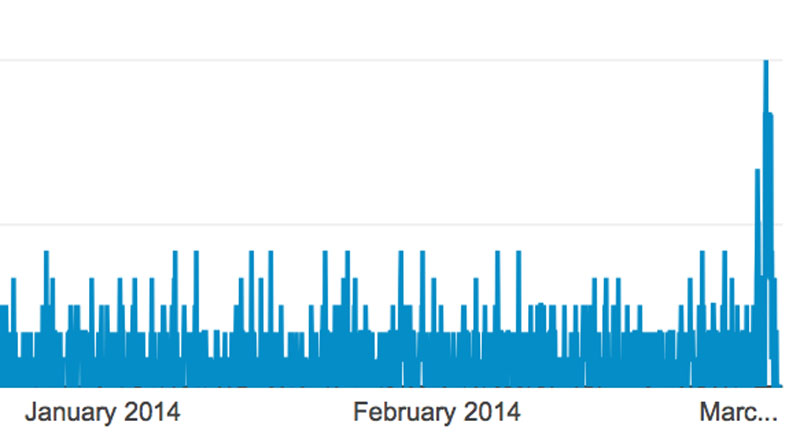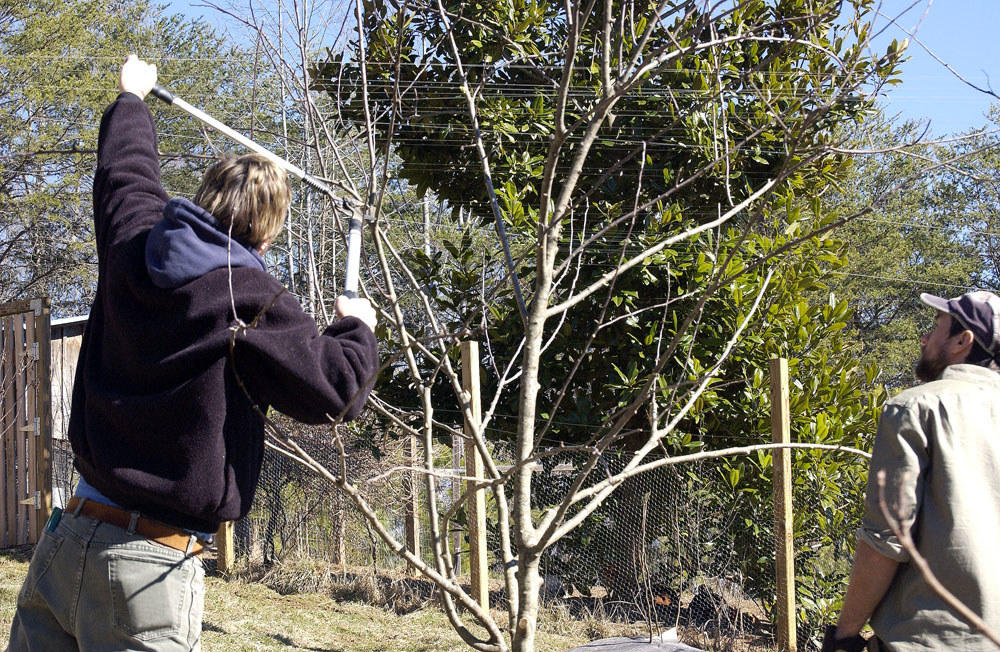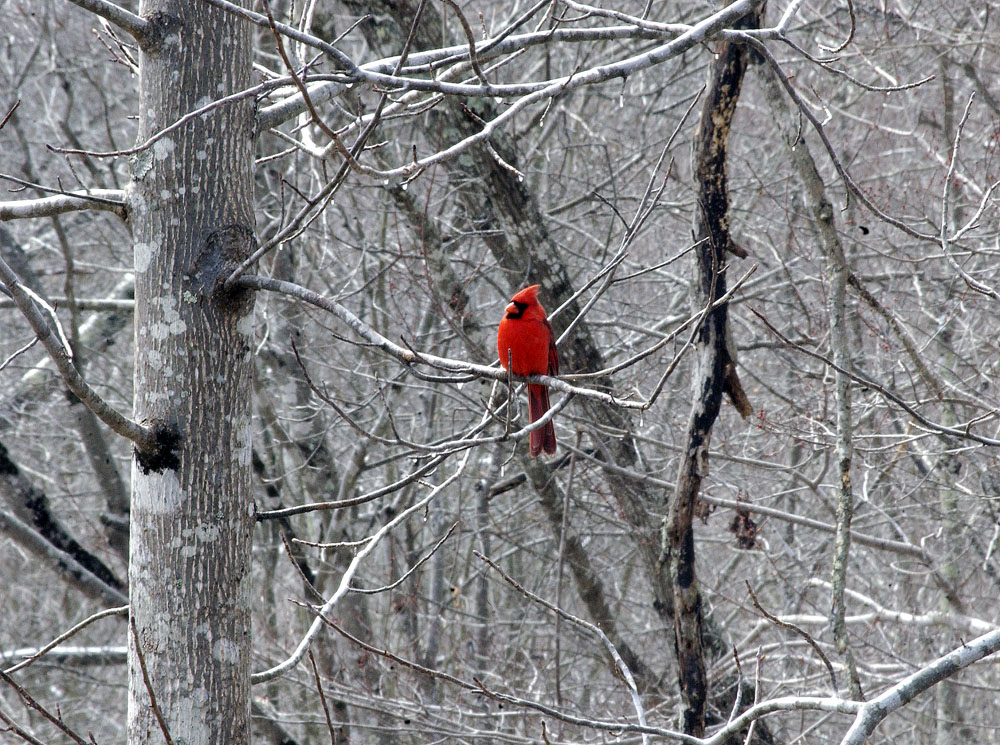
Everywhere you look these days, there’s a cardinal. This photo was taken from an upstairs, west-facing window at the abbey.
Changing domains: Not for the faint of heart
About four months ago, I moved out of the crippledcollie.com domain into this domain — acornabbey.com. Not only is a domain change a tedious and challenging process, even for a nerd. There also is the risk of losing readers.
Frankly, I didn’t do the best of all possible jobs. I went to quite a lot of trouble to move all the posts and photos (about 900 posts and more than 1,000 photos) from the old blog to the new blog. I assumed that Google would find, and index, all those posts at the new acornabbey.com domain. I was wrong. I recently figured out that Google would probably never find all the older material unless I submitted a “site map” to Google, using Google’s Webmaster Tools. That has now been done, and I’m waiting for Google to finish re-indexing everything.
Another step that I needed to take was to automatically redirect traffic from the old blog to the new blog. That was relatively easy, using an .htaccess file on the old server to map everything to the new domain and redirect everything to the new domain.
These changes are kicking in, and traffic to acornabbey.com has more than doubled. I expect it to increase even more once Google finishes indexing all the old posts, which go back to 2007. I’ve posted on many different subjects over the years and show up in a lot of Google searches on obscure subjects such as “Pleides,” “iambic pentameter,” or “biscuits and gravy.”
Nerd post: Hewlett Packard 3456a digital multimeter
One of the tragedies of being a nerd is not being able to afford the toys one would like to have when those toys are new. But, thanks to eBay, we can go back in time and find bargains in some of the cool things we’d have liked to have many years ago.
A recent eBay acquisition is an HP 3456a digital multimeter. I believe the list price on these devices was $6,395 in 1982. They can still cost $600 to $700 on eBay if the seller can vouch for the history of the instrument and guarantee that it’s in good working order. If you watch the auctions carefully for a while, you can pick up an HP 3456a for less than $100 if you’re willing to accept some risk.
This instrument seems to be in great working order. The display in the photograph is showing the readout with a 100-ohm resistor across the terminals. The tolerance of the resistor is 5 percent, so at only 1.213 ohms off the rated value of the resistor, the odds are good that both the resistor and the HP 3456a are close to specification.
One of the cools things about the HP 3456a multimeter is that it can be controlled (using an HP-IB interface) by an early HP computer — the HP 85, one of which I also happen to have. Getting the two devices talking to each other will be a project for some other rainy day.
It’s a shame that Hewlett Packard is a mere shadow of its former self. Clearly, years ago, it was a company run by engineers, for engineers, selling to engineers. Cost was not a problem. It was all about the quality of design and the quality of the build. That’s why their stuff is still working today.
John Twelve Hawks is now on Facebook
From time to time, I have written here about John Twelve Hawks, and so I get a fair number of visitors to this blog who have searched the Internet for “John Twelve Hawks.” Some of you fans of John Twelve Hawks may not be aware that he recently created an official, verified Facebook page. He posts photos periodically and offers snippets from his off-the-grid life.
For my previous posts on John Twelve Hawks, use the blog search box to search for his name. To find him on Facebook, type his name in the Facebook search box.
And though John doesn’t know it yet, I plan to send him a copy of Fugue in Ursa Major as soon as it’s released, hoping that he’ll like the book enough to write me a cover blurb.
The pruning’s done
Another drop in the compost bucket
It’s shocking how the abbey grounds soak up compost. I long ago lost count of the total number of truckloads of compost that have been delivered here. It’s used for mulch and to loosen the soil when trees and shrubs are planted, plus a large amount of compost is tilled into the garden each year. The soil eats it, and it seems to vanish. But surely it’s still around in some form, feeding the earthworms. This is leaf compost, which is not the most nourishing compost in the world. But the earthworms eat it and never complain.
Spring fever
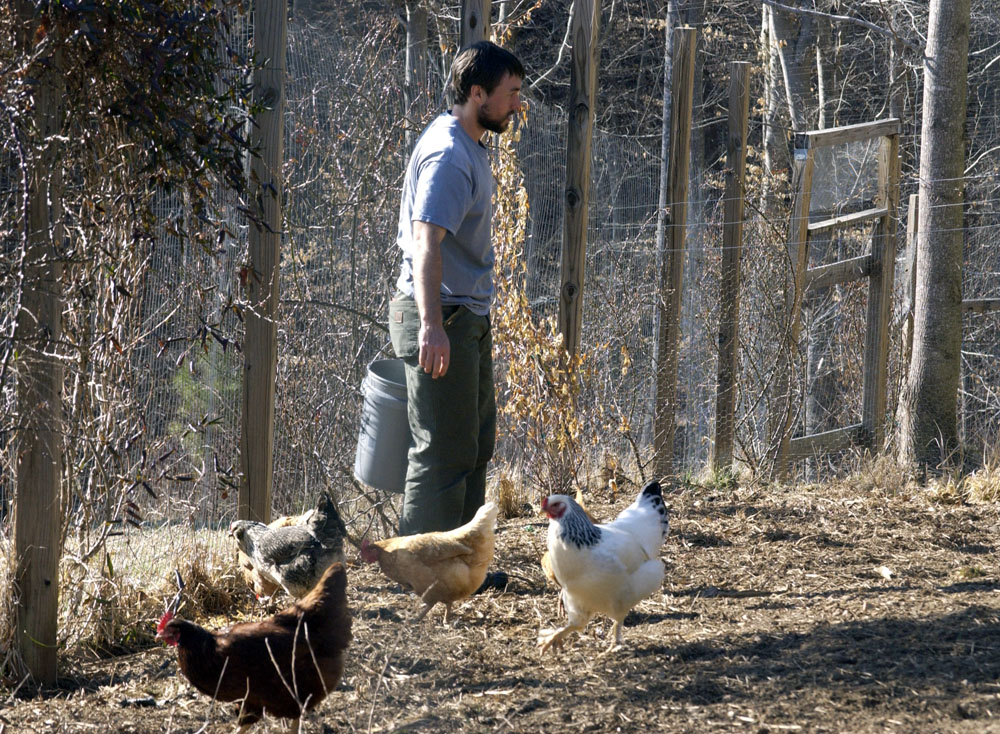
Picking up rocks in the garden
Winter’s back is broken. The temperature today reached 68 degrees. The daffodil shoots are a couple of inches high. While I have been recovering from minor surgery, Ken has a serious case of spring fever. This morning he washed all the windows, inside and out. Then we measured for an extension of the chicken fence into the woods, to give the chickens more scratching space and more summer shade. Ken wrote up a list of spring chores, including seeding and fertilizing the yard and orchard, mulching, and getting the spring garden planted. We’re a little late with pruning the apple trees. That needs to be done this week. The seeds for the spring garden have been ordered.
It was a harsh winter. Several times the temperature dropped as low as 4F. Most winters, the grass retains a strong tinge of green, but this winter everything went brown. The current generation of chickens (there are six of them) are the fiercest scratchers we’ve ever seen. They were damaging the turf in the orchard, so we allowed them only in the garden for most of the winter, where they could do no permanent harm to dormant growing things other than the garden’s cover crop of winter rye. Between the cold and the constant digging of the chickens, not a single sprout of the winter rye in the garden seems to have survived.
One couldn’t possibly have too much pasture for chickens. When growing conditions for grass are good, the grass can stay ahead of the chickens. But the girls can make a big mess of things in the winter. Luckily our chickens can be restricted either to the orchard or to the garden, with the chicken house in the middle. That saved the turf in the orchard this winter. The plan now is to add several hundred square feet of fenced area inside the woods.
When you’re committed to your chickens, the labor never ends. Partly this is because chickens become part of the family. And partly it’s because, once you become accustomed to home-laid eggs from properly pastured hens, there is no going back. No matter how much you’re willing to spend on eggs at places like Whole Foods, there is just no comparison.
Revisions done! Proofing again…
New proofs of Fugue in Ursa Major arrived today. This is the second proof set. Revisions after the first proof set were substantial, adding a couple of months to the production schedule.
However, I think the revisions have made it a much better book. Three chapters were completely rewritten. There are character and plot refinements throughout. To quicken the pace in the second half of the book, the revised version is almost 50 pages shorter. Still, at 300 pages and 94,000 words, it’s not exactly a short novel.
Ken Ilgunas gave me such good feedback on the first proofs that I asked the other first readers to stop reading and wait for the next revision. An author’s first readers are absolutely critical to the creative process. It requires experienced readers who can be good judges of the kind of story the author wants to tell. They mustn’t mince words when giving feedback. It can be like a kick in the stomach.
Fugue in Ursa Major is a pretty smart book, if I do say so myself, so smart first readers were a requirement. Though a lot of things happen in Fugue in Ursa Major, it’s not really intended to be action-packed science fiction. The book has strong contemplative, historical, and speculative elements that emerge during conversations between the two main characters, Jake and Phaedrus. Hopefully, Fugue in Ursa Major will be a brisk ride. But the heart of the book is in the lives of the characters. If Fugue in Ursa Major attracts enough readership, there will be a sequel. At the end of Book One, Jake and Phaedrus are just getting started with the world-changing task that has landed in their laps.
If all goes according to plan, the book should go on sale in March. There will be a trade paperback version, a Kindle version, and an Apple iBook (ePub) version.
Welcome back, Mrs. Fox?
When I first saw this fox this morning, she was sitting in the yard right below an upstairs window. By the time I grabbed the camera, she had headed into the woods. The photo was taken from the upstairs window. Two summers ago, a fox raised two pups at the edge of the woods right behind the house. I hope she’s back. They never harmed the chickens. We had a deal.
Sappho

Le Coucher de Sappho by Marc-Charles-Gabriel Gleyre
I have been besotted with the ancient Greeks of late, working my way through the magisterial The Greeks and Greek Love: A Bold New Exploration of the Ancient World, by James Davidson. The book is almost 800 pages long, in small type, so it’s a long haul. But I have had more fun with this book than any book I’ve read in months. Davidson is an Oxford-trained historian, but he writes with wit and humor. His approach is anything but dry. And rather than merely throwing out his analysis with a haughty academic attitude of take it or leave it, Davidson takes us into the texts. He lets us see for ourselves the basis of his interpretation of Greek history. We meet hundreds of characters from all over the Greek empire. He retells hundreds of stories from classical Greece. By the end of the book, you feel as though you’ve been on vacation in ancient Greece, and you’ve picked up a surprising amount of Greek vocabulary.
Thanks to Davidson, I also have discovered the poetry of Sappho. Right away I saw that she was the Greek Edna St. Vincent Millay. Here’s a fragment, translation by A.E. Housman:
The weeping Pleiads wester,
And the moon is under seas;
From bourn to bourn of midnight
Far sighs the rainy breeze:
It sighs from a lost country
To a land I have not known;
The weeping Pleiads wester,
And I lie down alone.The rainy Pleiads wester,
Orion plunges prone;
The stroke of midnight ceases,
And I lie down alone.
The rainy Pleiads wester
And seek beyond the sea
The head that I shall dream of,
And ’twill not dream of me.
What is sad is that very little of Sappho’s poetry remains. She was born around 600 B.C., but most of her work survived until Roman times. Then Sappho’s work was at the mercy of the Christians. It seems there were book-burnings. The church was redefining love according to its own brutally prudish theology, so these ancient ideas had to go. But it was not only an active purging of the literary record by the church. It also was neglect of those documents that survived and found their way into monastery libraries during the Dark Ages. Davidson tells us how this neglect probably happened:
“Time and again, a manuscript of Sappho’s songs or of Strabo or of Archimedes, one of only two or three copies in the world, or one of only one, was allowed to rot in the book box, while the scribe spent his precious hours making yet another copy of the painfully awful Greek prose of the evangelists. Or worse, the priceless thousand-year-old text was systematically erased and overwritten to make a private copy of the more polished pieties of some bestselling Christian sermonizer.”
It’s a pity that the sermons weren’t burned instead.
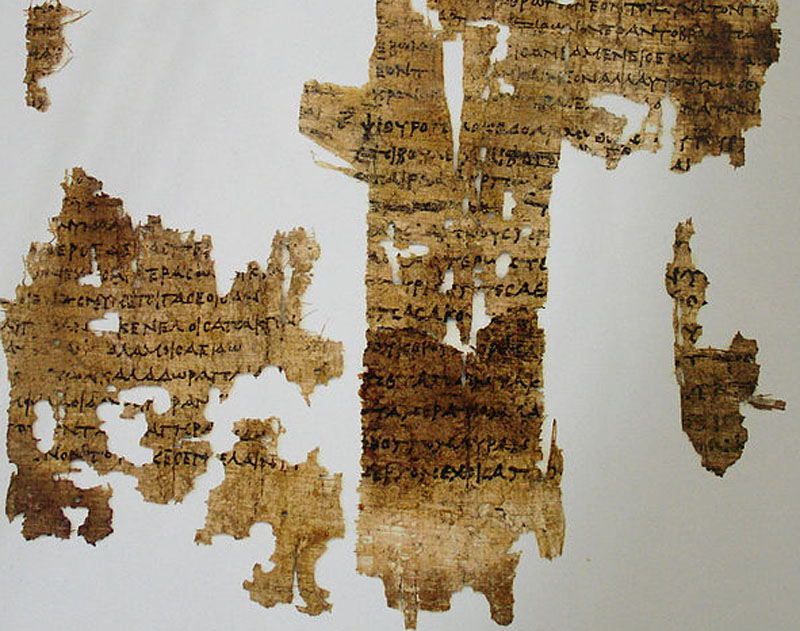
Fragments of a Sappho poem discovered and published in the 20th Century

